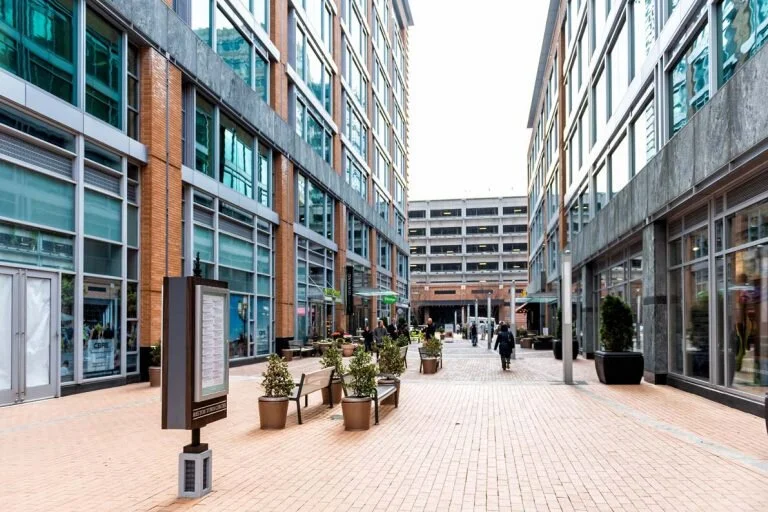An internationally known planned community founded in 1964, Reston was built with the goal of revolutionizing post–World War II concepts of land use and residential/corporate development in suburban America.
The Reston Town Center is home to many businesses, with high-rise and low-rise commercial buildings that are home to shops, restaurants, offices, a cinema, and a hotel. It comprises over 1,000,000 square feet of office space. Municipal, government-like services are provided by the nonprofit Reston Association, which is supported by a per-household fee for all residential properties in Reston. In 2017, Reston was ranked 29th in the Best Places to Live in America by Money magazine. The land on which Reston sits was initially owned by Lord Fairfax during the 18th century. C.A. Wiehle (for whom Wiehle Avenue is named) bought the land later in the 1880s. He died after construction of several buildings. His sons did not share his vision, and sold the land to A. Smith Bowman, who built a bourbon distillery on the site while maintaining a farm on most of the area, a 7,300-acre tract. An office retail development and a road are named for him. In 1961, Robert E. Simon bought most of the land, except for 60 acres on which the Bowman distillery continued to operate until 1987.
In 1967 the First Lady of the United States, Mrs. Lyndon Johnson, visited Reston to take a walking tour along its pathways as part of her interest in beautification projects. Apollo 11 astronauts Neil Armstrong and Buzz Aldrin visited Reston elementary schools named for them. Reston experienced increasing traffic congestion as it grew in the late 1970s and early 1980s. This was a time when Reston’s population was growing but the Dulles Toll Road had not been built. Commuter traffic between Reston and Washington created serious traffic congestion on the roads that connected Reston to Washington DC. In 1984 the toll road opened, and in 1986 the West Falls Church Washington Metro station opened. Most recently the Fairfax County Parkway, a major north-south artery, was opened. Reston has grown to a point where it now fits the definition of an edge city. While Reston takes on the statistical properties of an edge city, its tightly controlled design averted several problems they typically face, such as hostile pedestrian situations and lack of mass transit. Many of the neighborhoods in Reston were designed to be medium density, which is atypical of an edge city. In other ways it is a textbook example, with a majority of medium-rise office buildings, and some citizens opposed to the expansion of its high-density core.
[Source: Wikipedia]

